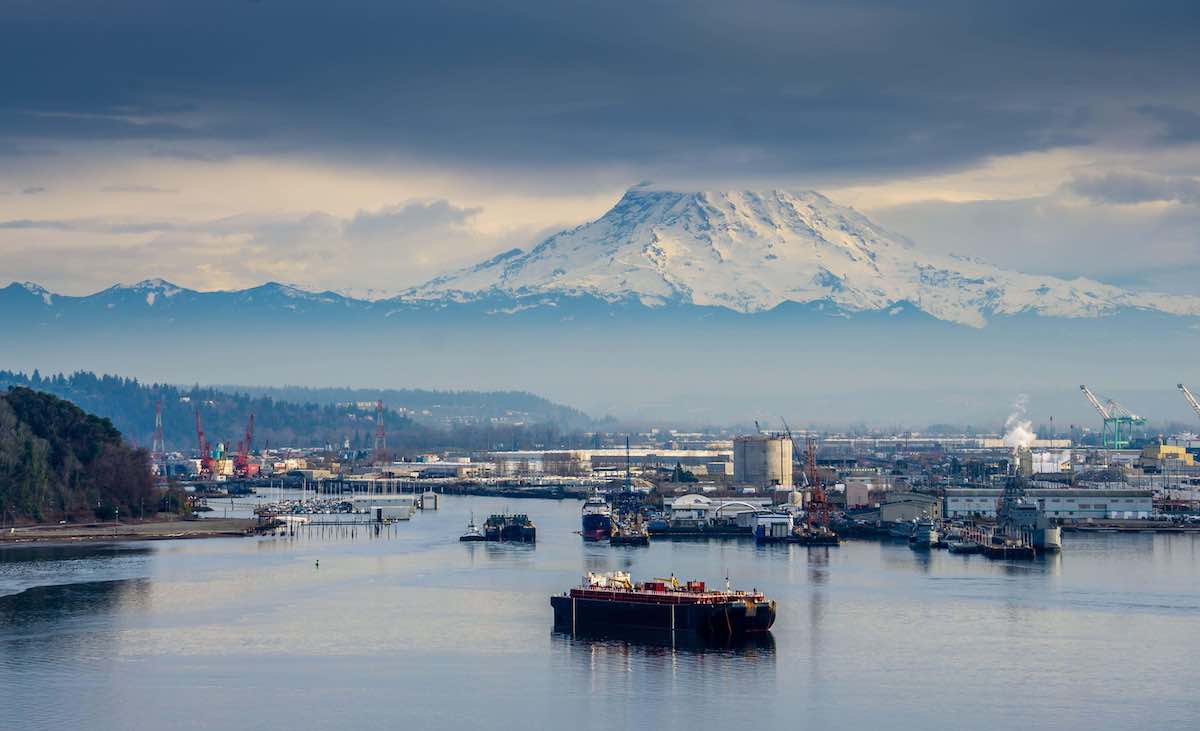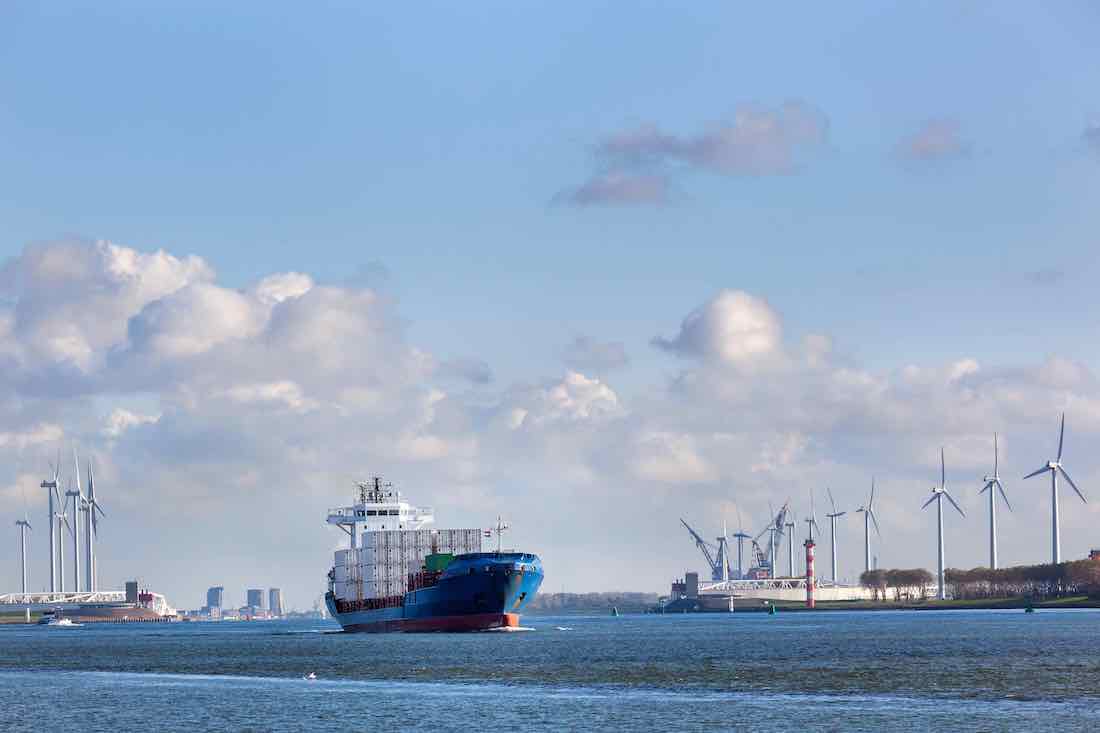New Report Highlights Benefits of Zero-Carbon Ports
We need to replace the fossil fuels used by most large vessels with zero-carbon green fuels

We are in the midst of an unprecedented opportunity to accelerate the decarbonization of the shipping industry. Over the next few months, several international and national discussions on how to address the causes and impacts of climate breakdown will take place. Closest to home, this includes the negotiations in the U.S. Congress over financing the country’s most ambitious climate agenda to date. Underpinning these processes is the sense of urgency from the Intergovernmental Panel on Climate Change’s (IPCC) most recent report, which made it clear that time has run out for incremental approaches to zeroing out greenhouse gas emissions.
It is within this context that Ocean Conservancy releases Zero-Carbon for Shipping: Sailing Carbon-free along North America’s West Coast. The report presents case studies of five ports along the west coast of North America that demonstrate how strategic investments and initiatives can create a zero-carbon shipping corridor that would leverage the ports’ combined influence to reshape the industry.
Shipping, Fuels and Ports
As the backbone of the supply chain, global shipping moves 90% of the world’s goods from producers to consumers. It also churns out around 1 billion metric tons of carbon dioxide—equal to Germany’s emissions—and other toxic pollutants into the atmosphere every year. If nothing is done to clean up shipping, its carbon emissions are projected to jump by almost 130% by 2050.
We urgently need to replace the fossil fuels used by most large vessels with zero-carbon green fuels, like hydrogen and ammonia produced with electricity entirely from renewable sources. These “electrofuels” will not only cut emissions from shipping but can also be used for other highly polluting industries. Getting to this stage means we need to build or retrofit ships to run on these fuels and invest in the necessary port infrastructure to serve these vessels while reducing port emissions and pollution.
Bustling maritime ports are at the heart of domestic and international shipping, but they also are often fossil-fueled pollution hotspots. Belching carbon dioxide and other noxious chemicals, heavy equipment and trucks service vessels and transport cargo, and vessels idle at berth to refuel or while waiting to dock. (This week alone, a record-breaking 60+ ships are waiting to dock at the ports of Los Angeles and Long Beach.) Ports are often in working-class communities of color where the pollution they generate results in devastating health and economic impacts. These consequences overwhelmingly affect those already suffering from poverty, racial and other forms of discrimination as well as intersecting forms of marginalization and economic insecurity.
This situation isn’t inevitable. Zero Carbon for Shipping shows that early actions to decarbonize port operations and support the development, production and delivery of zero-carbon fuels can simultaneously help transition local economies to a strong, sustainable future; enhance opportunities and conditions for people and communities; and leverage change throughout the industry.

Each of the five ports studied would bring unique characteristics and comparative advantages to a zero-carbon shipping corridor. The Port of Los Angeles, for instance, is an ideal model of a busy, urban port where the high volume of vessel traffic provides rich opportunity for a transition to zero-carbon fuels. It is already a leader in taking decarbonization measures in both its operations and the fleet it serves, having reduced operations emissions over 50%. The Port of Los Angeles has ongoing collaborations, including initiatives with ports in Mexico, China and the Panama Canal. These partnerships can provide momentum for deploying zero-carbon fuels at the port and renewable energy either at the port or further inland and leverage for decarbonizing the shipping fleet.
Looking at the other cases, Oakland’s outstanding potential for renewable electricity generation can support a green hydrogen economy beyond the shipping industry, and Tacoma can enable zero-carbon fuel adoption while decarbonizing local passenger transport. By investing in producing and supplying electrofuels, Vancouver can help replace the revenue and jobs lost from expected lower demand for its coal exports. Finally, Unalaska’s unique combination of untapped renewable energy resources and local needs can give birth to complete electrofuel supply chains and even circular economies.
In each case, a transition to zero-carbon fuels and other approaches to decarbonization creates opportunities to prepare the workforce for the shift towards green, sustainability-related jobs. An example comes from a forthcoming University of California Berkeley study showing that investing $18.5 billion to electrify U.S. ports could create more than 30,000 jobs per year over the next 10 years.
On the Brink of Major Opportunities
A number of dialogues and processes focusing on the global response to the climate crisis are occurring right now—with increasing energy behind decarbonizing the shipping sector. In the U.S., Congress is debating the budget reconciliation and infrastructure bills, which include several billion dollars for reducing emissions at ports and developing low- or no-carbon fuels. On the global stage, this week the U.N. General Assembly will spotlight climate change as New York City Climate Week runs concurrently. In October and November, countries will detail their plans to limit global warming at COP 26 in Glasgow, and the International Maritime Organization will meet to discuss decarbonizing shipping.
Zero-Carbon for Shipping explores how early actions to develop and promote zero-carbon fueling infrastructure along critical trade routes can open opportunities to drive the change across the shipping industry. We call on advocates and policy makers to join us in using the examples and analysis in the report in these largely political discussions to make the case for strategic investments that will put us on the path to a sustainable and just world.
You can read the full report on the Ocean Conservancy website.